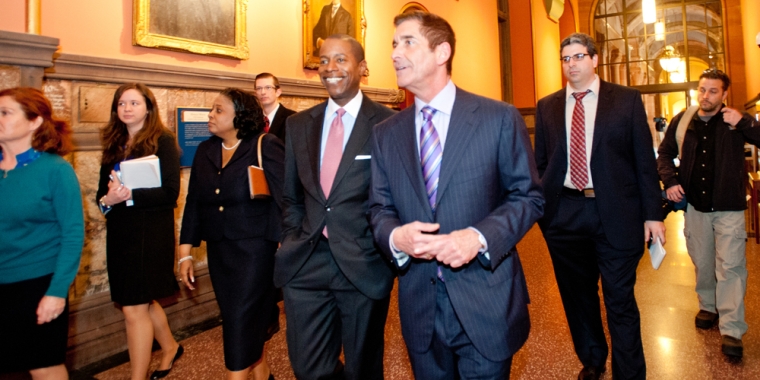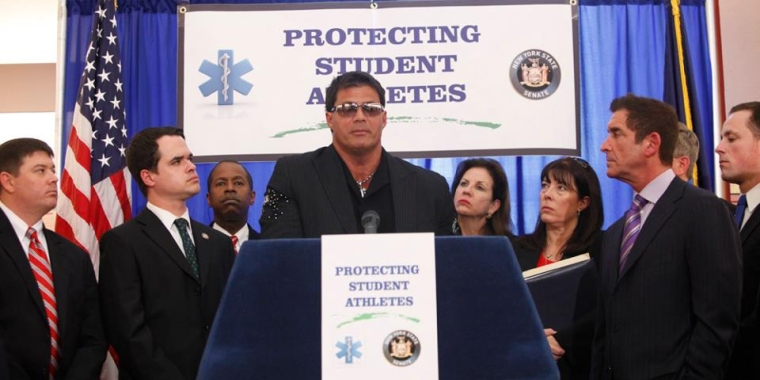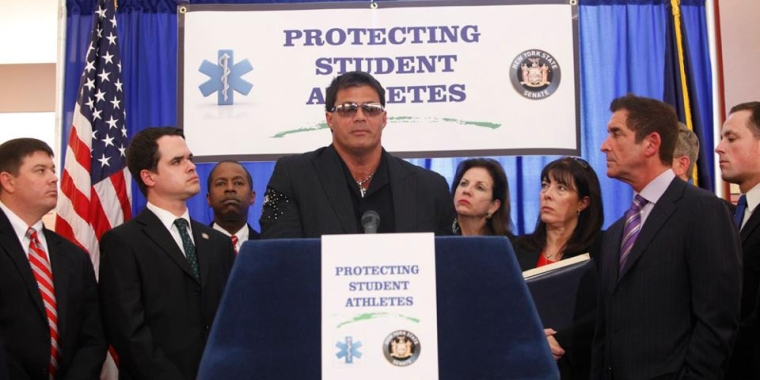Historic Rehabilitation Tax Credit Passes Senate; Brings Redevelopment To Distressed Communities
Malcolm A. Smith
May 27, 2009
-
ISSUE:
- Finance
- Investigations
-
COMMITTEE:
- Finance
(Albany, NY) The New York State Senate unanimously passed today a vitally important economic stimulus and community revitalization program: the Historic Rehabilitation Tax Credit (HRTC) (S2960-B/Valesky).
HRTC strengthens the State program first launched in 2006 and will make New York State more competitive against the nearly 30 other state’s with similar programs, who have had more success. The changes will allow the state to target reinvestment to distressed communities, as determined by the U.S. Census, and incorporate cost savings to the administration of the program.
Because of these changes, New York State will have among the most productive and cost-effective redevelopment programs in the country.
The bill passed the Senate with unanimous support and is expected to pass the Assembly. Senators are working with the Governor to ensure that, based on the program’s ability to attract new investment, business, and jobs to the state at a time when our economy is struggling, it is signed into law.
Senator David J. Valesky (D-Oneida), Vice President Pro Tempore of the Senate and lead sponsor said, "The Historic Rehabilitation Tax Credit will provide real incentives to stimulate Main Street and downtown development that will create jobs, increase property values and provide a better quality of life for all Upstate New Yorkers. This program has great potential to revitalize the Upstate economy and reduce the strain on urban, suburban and rural communities alike."
“This is exactly the kind of smart economic development program that will help us turn this economy around and strengthen our communities,” said Senate Majority Leader Malcolm A. Smith. “Our State’s ability to attract new businesses and investment will increase dramatically, and will help us produce the kind of results that the people of New York expect and deserve. There are struggling communities in every region of this state who will benefit from the reinvestment and beautification of our neighborhoods.”
Features of the Senate’s legislation include:
- Increase the cap on commercial credit value from $100,000 to $5 million; the residential credit value will increase from $25,000 to $50,000. These are over the course of the program, which is 5 years.
- Limit the availability of the residential and commercial credit of the program to “distressed” areas, which is defined as being located within a Census tract identified at or below one hundred percent of the median family income.
- Increase the percent of qualified rehabilitation costs that can be claimed for the credit from 6-percent to 20-percent, allowing for a higher percentage of qualified rehabilitation costs.
- Make the credit assignable, transferable, and conveyable within business partnerships, to allow for greater flexibility on the part of the investor, and attract out-of-state financing to in-state rehabilitation projects.
- Offer the rehabilitation tax credit as a rebate to make the program a stronger financial incentive for homeowners without significant income tax liability.
“As a cosponsor of this important legislation, I support the effort to create economic stimulus and community redevelopment especially in western New York,” said Senator William T. Stachowski (D-Lake View), Chairman of the New York State Senate Committee on Commerce, Economic Development and Small Business. “Many historic buildings throughout upstate are currently vacant, underutilized, and deteriorating. By providing a tax credit for the rehabilitation of these properties, we can encourage their restoration to their former beauty and build up many distressed neighborhoods.”
"In these difficult economic times it is more important than ever to pass legislation that will stimulate the economy," said Senator Liz Krueger (D-Manhattan), Vice-Chair of the Senate Finance Committee. "This bill will significantly promote growth in distressed communities by creating an incentive to rehabilitate deteriorating historic buildings."
“Historic preservation tax credits are a cost effective way to create jobs, increase homeownership and boost property values,” said Senator Darrel J. Aubertine (D-Cape Vincent), Chairman of the Senate Upstate Caucus. “Tax credits and other incentives for historic preservation attract new business and investment, which improves our economy and builds a sense of community. I’m quite pleased we have passed this legislation, which will benefit many new and existing projects in Central and Northern New York.”
“The Historic Rehabilitation Tax Credit Program is one that already serves several purposes and can now do even more,” said Senator Neil Breslin (D-Albany). “It preserves our rich heritage by creating an incentive to rehabilitate our beautiful historic homes, and the increased tax cap on commercial credit will help better stimulate our economy, creating new jobs. This program is truly a win-win for New York’s distressed neighborhoods.”
“A Historic Rehabilitation Tax Credit will provide an incentive to maintain and renovate infrastructure throughout our state and help protect valuable historic structures,” said Senator Brian X. Foley (D–Blue Point). “This measure is part of larger efforts by the Senate to boost economic development and stimulate New York State’s economy.”
"This measure provides a crucial economic development tool desperately needed in our urban areas and distressed communities," said Senator Andrea Stewart-Cousins (D–Yonkers). "Especially during these challenging economic times, we need to strengthen our communities by enabling development and creating jobs in a cost-effective manner. I was pleased to support the Historic Rehabilitation Tax Credit legislation, which effectively advances these important goals.”
"This much needed economic development tool will help preserve historic structures in our villages and neighborhoods, as well as spur development in communities that are in need of an economic revitalization," said Senator Craig M. Johnson (D-Nassau). "I thank Senator Valesky for leading the charge on this important legislation that will have a positive impact on Long Island and across New York State."
“Rehabilitation and reuse of historic buildings using a tax credit program has proven nationally to be one of the most successful policy tools in economic and community development,” said Senator Bill Perkins (D-L-New York). “Harlem and other parts of my district are blessed with many beautiful historic buildings. Not only will this program preserve our rich history, it will help businesses restore historic income-producing buildings by making preservation work more affordable and at the same time creating jobs.”
"This legislation will spawn investment, increase property values and create jobs," stated Senator Antoine M. Thompson (D-parts of Erie and Niagara Counties).
---- Additional quotes ----
"The Senate took an important step today by expanding a program that has proven its worth as an economic stimulus in other states," said Peg Breen, President of The New York Landmarks Conservancy. "Providing enhanced tax credits for the rehabilitation of historic homes and neighborhoods will benefit all parts the state."
"This bill is everything you could ask for in an economic development tool,” said Robert Simpson of the Metropolitan Development Association of Syracuse and Central New York. “It provides developers with a fair and predictable stimulus; targets those incentives to distressed communities that need it most; allows the state to leverage more federal resources and does it all by encouraging investment in urban centers and reducing sprawl. We applaud the Senate's leadership on this important issue. We hope that the Assembly will move quickly to follow suit so that the Governor can sign the bill and put New Yorkers to work rebuilding our main streets and downtowns."
"This bill represents a fiscally prudent and highly targeted investment that will produce transformative results in New York State's urban cores," said Ben Walsh, Executive Director of the New York State Urban Council. "Senator Valesky and his colleagues clearly recognize what our members have been telling us for a long time - our state's historic building stock is among our greatest economic assets."
“Senator Valesky’s leadership has been critical in our efforts to secure an expanded New York State Rehabilitation Tax Credit program that will serve city centers, main streets, and older neighborhoods throughout New York State,” said Jay A. DiLorenzo, President of the Preservation League of New York State. “A diverse partnership of municipal officials, economic development groups, and preservation organizations have sought these changes based on the strong belief that this expanded program could represent one of the most effective economic development programs for New York State.”
"Enhancing and encouraging investment opportunities in Upstate, especially in our urban cores, are mission critical to Upstate’s economic turn around. We recognize the challenging fiscal conditions New York is facing, but these projects will have a proven, measurable net return on investment for our communities and New York State," said Darlene Kerr, President of the Greater Syracuse Chamber of Commerce. "This will put many rehabilitated vacant and underutilized buildings back on the tax rolls. Congratulations to Senator Valesky for sponsoring this best practices version of rehabilitation tax credit and leading its passage in the Senate."
Satellite coordinates (to air from 2 to 2:15 PM today) of senators commenting on this important legislation are:
Satellite Horizon 2 (Ku Analog)
Location 74 degrees west longitude
Transponder 12
Receive frequency 12160 MHz
Audio 6.2 or 6.8 MHz (discrete wide)
Polarity Horizontal
For technical information call 518-453-9521.
Share this Article or Press Release
Newsroom
Go to NewsroomSen. Smith with Sen. Jeff Klein 1/9/13
March 5, 2013


